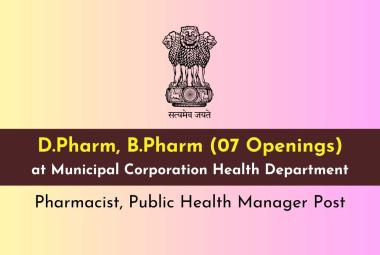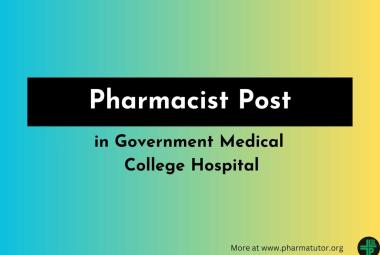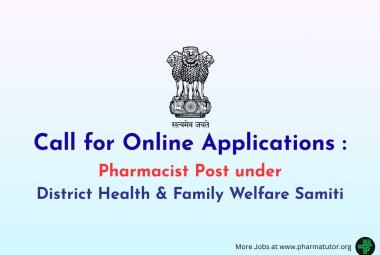 About Authors:
About Authors:
M.Sateesh Kumar, C.Aparna*, Nalini Shastri, M.Sadanandam.
Department of Pharmaceutics, Sri Venkateshwara College of pharmacy,
Madhapur, Hyderabad-500081, India.
*sateeshmkt@gmail.com
Abstract:
Ropinirole hydrochloride buccoadhesive bilayered tablets containing bioadhesive layer and drug free backing layer were formulated to release the drug for extended periods of time with reduction in dosing frequency. The tablets were prepared by direct compression method using bioadhesive polymers like Carbopol934P, Methocel K4M, Methocel K15M, Sodium carboxy methyl cellulose, PVP K-30, Sodium alginate and Hydroxy propyl cellulose alone or in combination, Ethylcellulose has incorporated as an impermeable backing layer. Tablets were evaluated for weight and content uniformity, thickness, hardness, surface pH, swelling index, exvivo mucoadhesion time, invitro drug release and invitro drug permeation. The modifiedinvitro assembly was used to determine and compare the bioadhesive strength of tablets with fresh porcine buccal mucosa as a model tissue All characteristics of formulated tablets were shown to be dependant on composition of bioadhesive materials used. Maximum bioadhesion strength was observed for tablets formulated with Carbopol 934P. Carbopol 934P and Methocel K4M in the ratio of 1:1 could be used to design effective and stable buccoadhesive tablets of ropinirole hydrochloride.
[adsense:336x280:8701650588]
Reference Id: PHARMATUTOR-ART-1390
Introduction:
Buccal delivery provides direct entry into the systemic circulation, thus avoiding the hepatic first-pass effect, ensuring ease of administration, and making it possible to terminate delivery when required. Attempts have been made to formulate various buccal mucoadhesive dosage forms, including tablets, films, patches, disks, and gels. A suitable buccal drug delivery system should possess good bioadhesive properties, so that it can be retained in the oral cavity for the desired duration. In addition, it should release the drug in a unidirectional way toward the mucosa, in a controlled and predictable manner, to elicit the required therapeutic response. This unidirectional drug release can be achieved using bilayer devices1.A number of formulation and processing factors can influence properties and release properties of the buccal adhesive system. The conventional buccal adhesive tablets have some limitations: (1) conventional tablets may not have a uniform adhesive layer, leading to weak adhesion; and (2) because of nonuniform adhesive and backing layers, the release of drug may not be unidirectional. Technically, an ideal buccal adhesive system must posses the following properties: (1) maintains its position in the buccal cavity for a few hours, (2) releases the drug in a controlled fashion, and (3) provides drug release in a unidirectional way toward the mucosa2.
Ropinirole hydrochloride is a new non ergoline dopamine D2 and D3 receptor agonist used in the management of Parkinson’s disease and idiopathic restless legs syndrome. Ropinirole is rapidly and completely absorbed from the gastro intestinal tract. Ropinirole hydrochloride is subjected to an extensive hepatic first pass metabolism following oral administration with a systemic bioavailability of 50% and the average biological half life 6 h3.
The objective of the present study was to prevent the hepatic metabolism of the drug by designing buccoadhesive bilayered tablets to release the drug for an extended period of time for improvement in bioavailability, to reduce the dosing frequency and to improve patient compliance.
[adsense:468x15:2204050025]
MATERIALS AND METHODS
Ropinirole hydrochloride (RH) was obtained as gift sample from Ind-Swift laboratories Ltd. (Punjab, India). Carbopol 934P (CP) was obtained as a gift sample from Maruti Chemicals Ltd. (Ahmedabad, India). Methocel K4M and K15 M were gifted by Colorcon Asia Pacific Pvt. Ltd. (Goa, India). Sodium carboxy methyl cellulose (NaCMC) was gift sample from Loba chemie Pvt Ltd. (Mumbai, India). Hydroxy propyl cellulose was a gift sample from Arihant chemicals (Mumbai, India). PVP K30 was a gift sample from Dr.Reddy’s laboratories (Hyderabad, India). Sodium alginate from S.D.Fine chemicals (Mumbai, India) and all other materials were of analytical grade.
Preparation of buccoadhesive bilayered tablets:
Buccoadhesive bilayered tablets were prepared by a direct compression procedure involving two consecutive steps. The mucoadhesive drug/polymer mixture was mixed homogeneously in a glass mortar for 15 minutes. The backing layer ethyl cellulose was punched using a 9-mm, round-shaped flat punch on a multistation tablet machine (Rimek, India).The upper punch was raised and the backing layer of EC was placed on the above compact; the 2 layers were then compressed into a mucoadhesive bilayer tablet. Compact prepared was placed over the mucoadhesive mixture and 2 layers compressed to form bilayered tablets. The bilayered tablets were prepared using compositions as given in Table 1.
Evaluation of Buccoadhesive bilayered tablets:
All the prepared Tablets were evaluated for uniformity of weight, drug content, friability, hardness, content uniformity and swelling studies.
Ex Vivo Mucoadhesive Strength:
A modified balance method was used for determining the ex vivo mucoadhesive strength4. Fresh porcine buccal mucosa was obtained from a local slaughterhouse and used within two hours of slaughter. The mucosal membrane was separated by removing the underlying fat and loose connective tissues. The membrane was washed with distilled water and then with phosphate buffer pH 6.8 at 370C. The fresh porcine buccal mucosa was cut into pieces and washed with phosphate buffer pH 6.8. A piece of buccal mucosa was tied to the open mouth of a glass vial, which was filled completely with phosphate buffer pH 6.8, and held on the left side of the balance. The glass vial with rubber stopper was placed and tightly fitted in the center of glass beaker containing phosphate buffer (pH 6.8, 370C ± 0.50C) just touching the mucosal surface. The tablet was stuck to the lower side of the rubber stopper of the glass vial with cyanoacrylate adhesive. The left and right pans were balanced by adding a 5-g weight on the right hand pan. When the 5-g weight was removed from the right-hand pan, the left-hand pan along with the tablet was lowered over the mucosa. The balance was kept in this position for 5 minutes. Water (equivalent to weight) was added slowly at 100 drops/min to the right-hand pan until the tablet detached from the mucosal surface. The weight (gram force) required to detach the tablet from the mucosal surface gave the measure of mucoadhesive strength. The experiments were performed in triplicate and average values with standard deviation (SD) were reported.
Ex Vivo Mucoadhesion Time:
The ex vivo mucoadhesion time was examined (n = 3) after application of the buccal tablet on freshly cut porcine buccal mucosa4. The fresh porcine buccal mucosa was tied on the glass slide, and a mucoadhesive core side of each tablet was wetted with 1 drop of phosphate buffer pH 6.8 and pasted to the porcine buccal mucosa by applying a light force with a fingertip for 30 seconds. The glass slide was then put in the beaker, which was filled with 200 mL of the phosphate buffer pH 6.8 and kept at 370C ± 0.50C. After 2 minutes, a slow stirring rate was applied to simulate the buccal cavity environment, and tablet adhesion was monitored for 12 hours. The time for the tablet to detach from the porcine buccal mucosa was recorded as the mucoadhesion time.
Invitro drug release studies:
The US Pharmacopeia XXIII rotating paddle method was used to study the drug release from the bilayer tablet. The dissolution medium consisted of 200 mL of phosphate buffer saline pH 6.8. The release study was performed (n=3) at 370C ± 0.50C, with a rotation speed of 50 rpm. The backing layer of the buccal tablet was attached to the double sided adhesive tape and stuck at the bottom of the dissolution vessel with the mucoadhesive core facing the dissolution medium. Samples of 5 mL were withdrawn at predetermined time intervals and replaced with fresh medium. The samples were analyzed by UV Spectrophotometry at 248 nm4.
Invitro drug permeation studies:
The in vitro buccal drug permeation study (n=3) of RH through the porcine buccal mucosa was performed using a Keshary-Chien type glass diffusion cell at 370C ± 0.50C4. Fresh porcine buccal mucosa was mounted between the donor and receptor compartments. The buccal tablet was placed with the core facing the mucosa, and the compartments were clamped together. The donor compartment was filled with 1 mL of phosphate buffer pH 6.8 saline. The receptor compartment (25-mL capacity) was filled with phosphate buffer pH 7.4 saline. One-milliliter samples were withdrawn at predetermined time intervals and analyzed for drug content by UV spectrophotometer.
NOW YOU CAN ALSO PUBLISH YOUR ARTICLE ONLINE.
SUBMIT YOUR ARTICLE/PROJECT AT articles@pharmatutor.org
Subscribe to PharmaTutor Alerts by Email
FIND OUT MORE ARTICLES AT OUR DATABASE
RESULTS AND DISCUSSION:
The main aim of this work was to develop buccoadhesive bilayered tablets to release the drug at mucosal site in a unidirectional pattern for extended period of time without wash out of drug by saliva. CP, HPMC K4M, HPMC K15M, Sodium CMC, Sodium Alginate, HPC and PVP K-30 were selected as buccoadhesive polymers on the basis of their matrix forming properties and mucoadhesiveness while ethyl cellulose, being hydrophobic, as backing material5.
All the formulations passed tests for weight variation, content uniformity and showed acceptable results with respect to drug content (96.35-101.58%) and % friability (0.14-0.59%) with exceptions for formulations F28, F29, F30 and F31. Buccoadhesive tablets containing CP showed hardness in the range of 3-12 kg/cm2 which decreased with increasing amounts of HPMC, Sodium CMC and Sodium Alginate. The hardness of the tablets containing NaCMC and sodium alginate was much lower, ranging from 2 to 8 kg/cm2 and increased with increasing amounts of HPMC or CP. Drug is released by diffusion through the gel layer and/or erosion of this layer and is therefore independent of the dry state of the tablet.
Surface pH studies indicated that formulation (F1) containing only Carbopol 934P (CP) showed acidic pH, decrease in the amount of carbopol increased the pH. pH of all the formulations were close to 5-7 except F1 and F28,29,30,31 which have shown acidic and alkaline pH respectively. Formulation F1 had shown acidic pH due to the presence of higher amount of poly acrylic acid (CP). Formulations F1, 28, 29, 30&31 were not selected for further studies on the basis of surface pH study. These observations reflect that CP alone cannot be incorporated in the designing of buccoadhesive tablets.
Swelling studies revealed that all tablets hydrated very quickly reaching 50% to 70% hydration within 2hr and 83% to 90% within 24hrs. To know when the formulation loses its integrity, DS studies were done by comparing initial and final tablet weights after immersion in buffer. Results are depicted in Table 2.
The bioadhesion and drug release profile are dependent upon swelling behaviour of the tablets. Swelling index was calculated with respect to time. All the tablets reached 80% hydration within one hour. The swelling indices of tablets with CP and HPMC increased with increasing amounts of CP. Maximum swelling was seen with the formulations containing sodium CMC and/or CP, the values increased with increasing amounts of Sodium CMC and/or CP. From the studies of %Matrix Erosion formulations F17, F21 had eroded because they contain only water soluble polymers like HPC and PVPK30 respectively. Formulations F24-F31 did not maintain their integrity and were difficult to handle because of excessive swelling.
Ex-vivo Mucoadhesion Strength or Bioadhesion Strength showed highest bioadhesive strength for formulation F1 containing only Carbopol 934P (CP) the reason for such findings might be ionization of CP at salivary pH leading to improved attachment of the device to the mucosal surface. Adhesion force decreased as another polymer is mixed with CP. Tablets containing Sodium CMC showed least bioadhesion strength than all other formulations, which might be due to low viscosity of Sodium CMC.
Invitrodrug releasestudies revealed that the release of drug from different formulations varies with characteristics and composition of matrix forming polymers as shown in figures 4-6.Drug release rate increased with increase in amount of hydrophilic polymer. Formulations F10-F16, F25-F28 showed relatively high release rate, due to rapid swelling and erosion of sodium CMC and sodium alginate. F17, F21 also showed high release rate due to solubilization effect of water soluble polymers HPC and PVP respectively. Formulations F1,2,3,6,7,8,19,23 showed sustained release for more than 12hrs.All the other formulations released 100% drug within 3-10hrs.
Exvivo mucoadhesion time was performed only for selected formulas which were rejected on the basis of other parameters. It was seen that all the selected formulations F1,2,3,4,6,7,8,18,19,20,22 and 23 have not detached from the mucosa for more than 19hours.Based on theinvitro drug release, surface pH and bioadhesion strength of all the formulations, F2 formulation was selected for invitro permeation studies. The results of drug permeation from buccal tablets through the porcine buccal mucosa reveal that the RH was released from the formulation and permeated through the porcine buccal membrane and could possibly permeate through the human buccal membrane. The drug permeation was correlated with invitro drug permeation (fig.7).
Conclusions:
HPMC K4M shows satisfactory buccoadhesive properties. Formulation F2 using this polymer in a drug: polymer (1:1) ratio showed significant bioadhesive properties with an optimum release profile and could be useful for buccal administration of ropinirole hydrochloride. Further work is recommended to support its efficacy claims by long term pharmacokinetic and pharmacodynamic studies in human beings.
Table No 1 Release rate of the drug from formulation F2 (Invitro and Exvivo studies)
|
Formulation |
|
Zero R(Cvt) |
Higuchi R(Cv√(T)) |
Peppas |
First |
|
F2(Invitro) |
slope |
7.6109 |
34.988 |
0.8015 |
-0.1625 |
|
|
R2 |
0.9816 |
0.9731 |
0.9808 |
0.6142 |
|
F2(exvivo) |
slope |
6.4835 |
29.915 |
0.6928 |
-0.0707 |
|
|
R2 |
0.9879 |
0.9865 |
0.6928 |
0.9654 |
Table 1 COMPOSITION OF ROPINIROLE HYDROCHLORIDE BUCCOADHESIVE TABLETS
|
Formu |
|
|
|
Ingredients(mg) |
|
|
|
|
||
|
|
Ropinirole |
Carbo |
HPMC |
HPMC |
Sod. |
Sodium |
HPC |
PVP |
Magne |
Ethyl |
|
F1 |
2.28 |
95 |
0 |
- |
- |
- |
- |
- |
2 |
50 |
|
F2 |
2.28 |
47.5 |
47.5 |
- |
- |
- |
- |
- |
2 |
50 |
|
F3 |
2.28 |
71.25 |
23.75 |
- |
- |
- |
- |
- |
2 |
50 |
|
F4 |
2.28 |
23.75 |
71.25 |
|
- |
- |
- |
- |
2 |
50 |
|
F5 |
2.28 |
0 |
- |
95 |
- |
- |
- |
- |
2 |
50 |
|
F6 |
2.28 |
47.5 |
- |
47.5 |
- |
- |
- |
- |
2 |
50 |
|
F7 |
2.28 |
71.25 |
- |
23.75 |
- |
- |
- |
- |
2 |
50 |
|
F8 |
2.28 |
23.75 |
- |
71.25 |
- |
- |
- |
- |
2 |
50 |
|
F9 |
2.28 |
0 |
- |
- |
95 |
- |
- |
- |
2 |
50 |
|
F10 |
2.28 |
47.5 |
- |
- |
47.5 |
- |
- |
- |
2 |
50 |
|
F11 |
2.28 |
71.25 |
- |
- |
23.75 |
- |
- |
- |
2 |
50 |
|
F12 |
2.28 |
23.75 |
- |
- |
71.25 |
- |
- |
- |
2 |
50 |
|
F13 |
2.28 |
0 |
- |
- |
- |
95 |
- |
- |
2 |
50 |
|
F14 |
2.28 |
47.5 |
- |
- |
- |
47.5 |
- |
- |
2 |
50 |
|
F15 |
2.28 |
71.25 |
- |
- |
- |
23.75 |
- |
- |
2 |
50 |
|
F16 |
2.28 |
23.75 |
- |
- |
- |
71.25 |
- |
- |
2 |
50 |
|
F17 |
2.28 |
0 |
- |
- |
- |
- |
95 |
- |
2 |
50 |
|
F18 |
2.28 |
47.5 |
- |
- |
- |
- |
47.5 |
- |
2 |
50 |
|
F19 |
2.28 |
71.25 |
- |
- |
- |
- |
||||









